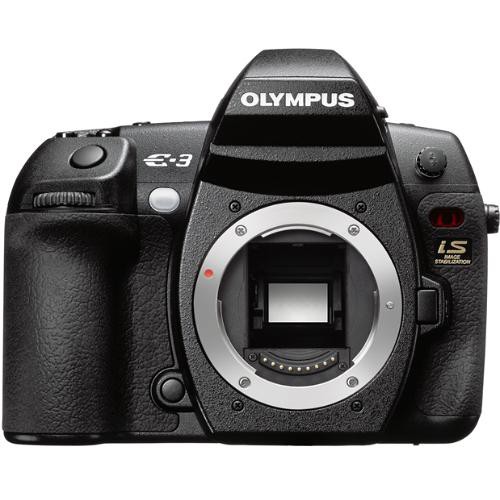Olympus E3 Specs and Scores

The Olympus E3 earns a score of 46/100 for its general specifications. Launched in 2007 with a price of $1300, this DSLR camera measures 142 x 116 x 75mm and weighs 890g (1.96lbs). While these specs were competitive at the time, they may not hold up well in today’s market, considering the advancements in camera technology over the years. Despite this, the Olympus E3 remains a reliable choice for those seeking a solid DSLR camera from that era.
Olympus E3 Overview and Optics
The Olympus E3 receives an optics score of 46/100. With a 10.1-megapixel resolution, the camera captures images at a shooting speed of 5 frames per second. Its Live MOS sensor, combined with the TruePic III processor, achieves a DXOMARK score of 56. The camera utilizes a Micro Four Thirds sensor size and a Micro 4/3 lens mount, providing compatibility with various lenses.
In today’s market, the Olympus E3’s specifications may not be the most impressive, as newer cameras offer higher resolutions and faster shooting speeds. However, the E3 includes image stabilization and a 4:3 aspect ratio, which are still valuable features for photographers.
Despite its age, the Olympus E3 maintains some desirable features, but it falls short when compared to newer models. It remains a reliable choice for those seeking a straightforward camera with essential capabilities.
Olympus E3 Video Performance
The Olympus E3 lacks video capabilities. Unlike most cameras, it does not have any options for recording video. This camera focuses solely on photography.
Olympus E3 Features and Benefits
The Olympus E3 receives a feature score of 43 out of 100, which may seem low when compared to modern cameras. The screen size is a modest 2.5 inches with a resolution of 230,000 dots, lacking a touchscreen. However, it does have a flip screen, which can be useful for different shooting angles.
In today’s market, the Olympus E3 falls short in terms of connectivity. It does not have GPS, WIFI, or Bluetooth capabilities. These features are now common in most cameras and allow for easy sharing of photos and geotagging.
Taking all the specifications into account, the Olympus E3 is a camera that has some useful features, such as the flip screen, but lacks many of the modern conveniences that photographers have come to expect. It may not be the ideal choice for those looking for a camera with the latest technology and high-quality connectivity options.
Olympus E3 Storage and Battery
The Olympus E3 scores a 63/100 in storage and battery. This camera has two memory card slots, accepting Compact Flash (Type I or II) and xD Picture Cards. The battery life allows for 610 shots, powered by a BLM-1 battery. However, the E3 does not support USB charging.
In today’s market, the Olympus E3’s storage and battery capabilities are decent but not outstanding. Many modern cameras offer longer battery life, USB charging, and compatibility with more memory card types. Despite these shortcomings, the E3 remains a reliable choice for those who prioritize other features and functionality.
